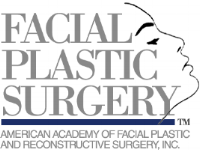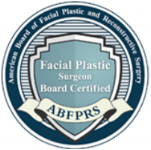Achieve Natural-Looking Results for Facial Reconstruction Surgery in Los Angeles
Mohs surgery, also referred to as Mohs micrographic surgery, is a procedure used to treat skin cancer. It is done by progressively removing thin layers of skin containing cancer until the tissue is cancer free. The goal within this procedure is to remove as much of the skin cancer, while also doing the least amount of damage to the surrounding tissue. This procedure has the highest cure rate, which makes it very effective.
At Westside Face, we perform Mohs reconstructive surgery in Los Angeles. It corrects the appearance of the wound. After removing the skin cancer, your dermatologist may recommend this immediate treatment by a plastic surgeon.
Types of Reconstruction Options
There are many options of techniques when it comes to reconstructive surgery. This is because there are different locations, amounts, and types of tissues of skin cancer. In addition, every case is unique. Here are the some of the most common techniques used in Mohs reconstructive surgery:
- Flap techniques
- Bone grafting
- Cartilage grafting
- Tissue expansion
- Skin grafts
How is Mohs Reconstructive Surgery Done?
Mohs reconstructive surgery is a pretty straightforward process, which involves closing the wound. Depending on the type of surgery you received initially, the reconstructive process may be very simple, or a little more on the complex side. Either way, there are a number of ways in which your plastic surgeon can close your wound. Our goal is to ensure that the surgical site is closed in a way that is positioned to follow the natural creases and curves of your face to make it look as natural as possible with minimal scarring.
After Mohs Reconstructive Surgery
After the reconstructive surgery, your plastic surgeon will observe you for a while after the procedure is done and you will be given aftercare instructions. Depending on the type of reconstructive surgery that is done, you may be prescribed a prescription for antibiotics.
Your surgeon will require follow-up examinations to ensure that the surgery has healed well and everything looks normal. If you experience symptoms of an infection, such as a fever over 101 degrees Fahrenheit, excessive redness, pain, or discharge, then contact your surgeon immediately. It is also very important to finish your antibiotics if you are required to take them.
In order to prevent any complications, it is essential that you limit vigorous physical activity, excessive bending over, or exercise for anywhere between a week to three weeks (depending on the location of the surgery) after surgery. By following the instructions provided by your Los Angeles facial plastic surgeon, it will allow your wound to heal properly and prevent any bleeding or damage to your stitches. Smoking is also prohibited after surgery, as this can certainly affect the healing process.
In addition, patients should not apply makeup or powder on the fresh wound until it is completely healed. Make sure to follow your doctor’s aftercare instructions that will be given to you after surgery.
Healing After Mohs Surgery
Patients typically see significant improvement during the first month; however, patients see the best results over the course of a few months once it is completely healed. It is essential that patients keep up with regular follow-ups to ensure that the patient is healthy, as those with a history of skin cancer are at an increased risk of developing it again. Your surgeon will be able to monitor you at your follow-up appointments to ensure that everything is fine and is going according to plan. Overall, the healing process after surgery is very easy and uneventful. Resting for a few days after surgery is very helpful. As for the stitches, they are typically removed in-office from a week to two weeks from the date of surgery. Depending on your surgery, your doctor will give you a time to come back in for stitch removal.
Contact Us For Mohs Reconstructive Surgery
At Westside Face, our surgeons are double board certified in otolaryngology– face and neck surgery, as well as reconstructive and other plastic surgery procedures. Our level of expertise is extremely unique, which is why we pride ourselves in providing the absolute best results for our patients. Feel free to contact us today if you are interested in scheduling a consultation. Our team provides more information on Mohs surgery in the articles below.
What Happens During Post-Mohs Reconstructive Surgery?
In this case, your doctor is trained to remove the cancerous tissue, analyze the lab specimens, and close or reconstruct the wound. After the skin cancer has been eradicated in previous procedures, the next step may be a simple closure or reconstructive surgery. When it comes to reconstructing, the site must be clear of cancer cells. Irrespective of the methods used, the plastic surgeon will ensure that the subsequent suture line is situated to follow the normal curves and creases of the face to minimize your scar’s look. Depending on the size and location the surgeon will recreate the area, as this treatment will impact the patient both cosmetically and functionally.
What Happens If You Leave Basal Cell Carcinoma Untreated?
Mohs is an effective treatment for treating basal cell carcinomas (BCCs) and squamous cell carcinomas (SCCs), which are common types of skin cancer. They can develop on any part of your skin. According to the American Cancer Society it makes up 8 out of every 10 confirmed cases of skin cancer. When BCC is left untreated it can lead to severe complications. Although the risk of it metastasizing to other organs or tissues is low, it should be treated promptly if you are diagnosed or recognize symptoms. These tumors can become deeply embedded in the skin and can damage skin tissue as well as bones, all of which can result in disfigurement. To avoid putting off treatment, it may be useful to learn more about the symptoms.







